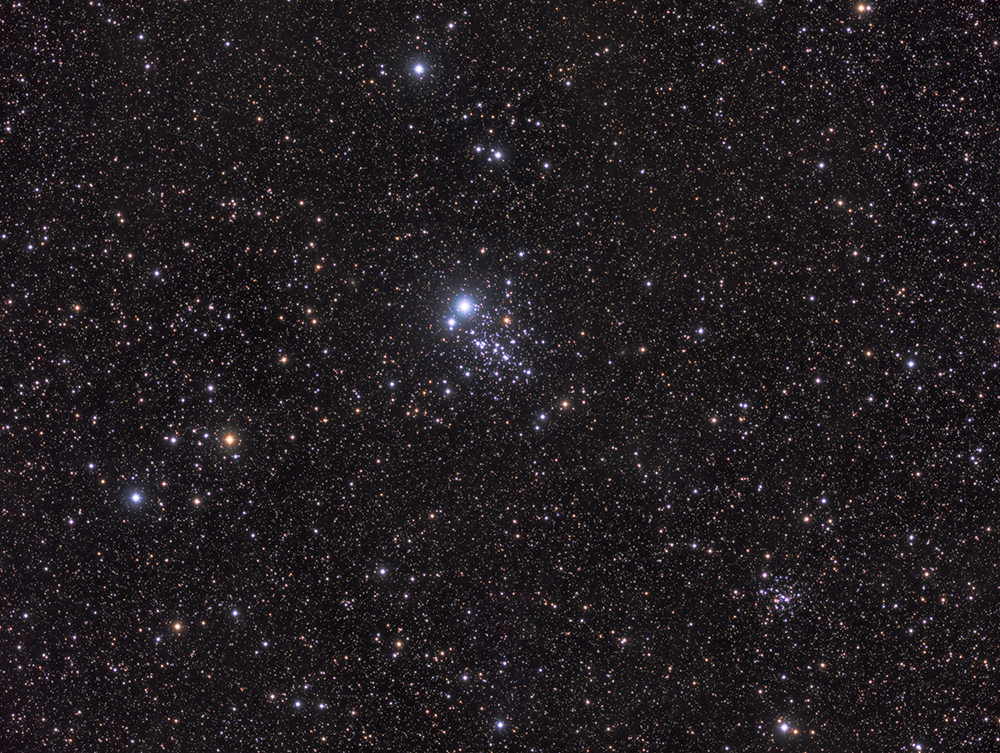Perched high up in the constellation of Cassiopeia some 7900 light years away from Earth is the Owl Cluster, NGC 457. Far from being old and wise, as an owl should be, this cluster is really quite young at only around 21 million years old. This is apparent in the overwhelming majority of the cluster's hundred or so stars being blue in colour, with only one red orange supergiant member. It is a very low density cluster that could easily be torn apart by stronger gravitational forces from nebulae or other clusters.
There are multiple interpretations of the cluster, including a fighter jet, with the two bright stars marking the afterburners, or the film character, ET. However, the most common is an owl and it is easy to see why. The two bright stars (Phi Cass, +5, and HD 7902, +7) are the owl's two big eyes and its body extends down below as the main bulk of the cluster, while bright stars stream out to the upper left and right of the body making the owl's outstretched wings. In reality the owl's eyes are probably disconnected from its body. There has been much debate as to whether the two bright stars are a part of the cluster itself. The distance to the cluster is very hard to measure accurately and a range of sources give distances from 5000 light years to around 9000 light years. However, recent measurements have concluded that the brightest star, Phi Cas, is only about 2,300 light years away, which would put it in the foreground. Being an open cluster, all its members should be of similar age and composition. However, the two brighter stars appear to have different ages and compositions and so again do not seem to belong to the cluster.
The Owl Cluster is an easy cluster to observe as it is circumpolar from latitudes above 32° N and so can be seen all year round. First find Cassiopeia, then when it is viewed as a W, the Owl Cluster is about 10° south east of the first dip on the left. It is usually not visible to the naked eye and you will need a pair of binoculars or a telescope to view the fuzzy cluster with its two bright eyes. |


